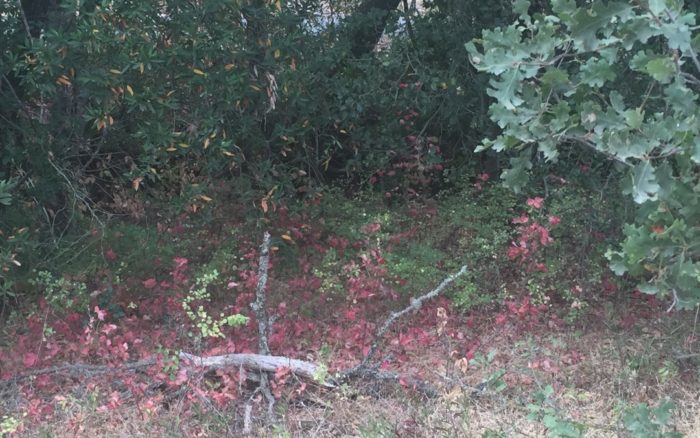The woods are aflame with Toxicodendron diversilobum, Pacific poison oak. Like a fastly spreading fire, its red leaves skip across the forest floor and leap high up our California oaks. For many years we tried to rid the ranch of poison oak, annoyed by its impact on us—red rashes and blisters that lasted weeks. We told ourselves it is why we originally got goats—to manage poison oak. The pygmies were not impressed with it, however, and besides, when they walked through it, or rubbed their heads in it, as goats love to do, and then we petted them—well, you get the picture!
But as it turns out (and why is this a surprise?) it is an important part of our ecosystem, providing berries and ground cover for squirrels, wood rats and birds. And when we transitioned our goat herd to graceful, long legged alpine beauties, we discovered they relish poison oak, as do the deer.
Our Biodynamic mentor taught us that plants naturally grow in areas to return balance to the land. Thorny plants grow in disturbed soils, and seem to say, “Keep off! This land needs rest!” Mustard’s presence reflects a need for more calcium in the soil. Learning to understand the natural presence of a plant is learning to listen to the earth.
I contemplate poison oak’s role in our woodlands. Maybe it is saying to us humans, watch out! Pay attention, or else! Ninety percent of us are allergic to poison oak. Perhaps the forest land needs fewer of us and more squirrels, birds, goats! and deer.
In homeopathy, poison oak remedy (rhus tox) is used for arthritis, inflammation, and stiffness. If like cures like, does the irritation poison oak brings when we are careless with nature bring some deeper healing in our relationship with nature? Does it increase flexibility, decrease irritation, bringing us into balance by insisting we become more conscious about our place in the whole? It is definitely a plant that has demanded my respect—and yes, we have quit trying to rid the ranch of it.
